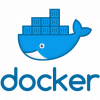continuous delivery
 |
If Santa Can Be Agile, So Can You To improve his toy development lifecycle, Santa Claus had the North Pole move to an agile and DevOps approach. Santa knows it's important to accept requirements late in the process, work incrementally, deploy on time, and—above all—focus on the customer. Here’s what he found to be more effective with agile and DevOps. |
|
 |
Continuous Automation, from Source Code to Production Automation is necessary to achieve the benefits of DevOps principles, so teams may use automation at every step of software development. Depending on how frequently and confidently a team deploys code, they can use automation to enable continuous integration, continuous delivery, and, finally, continuous deployment. |
|
 |
DevOps Red Flags: A Slack Takeover with Melissa Benua Thought leaders from the software community are taking over the TechWell Hub for a day to answer questions and engage in conversations. Melissa Benua, who's worked in dev, test, DevOps, and program management, hosted this Slack takeover and discussed DevOps adoption, red flags, and continuous delivery and deployment. |
|
 |
Implementing Continuous Delivery in the Federal Government Federal agencies generally have more regulation, slower processes, and a command-and-control style of bureaucracy. How does it work when trying to foster agility and implement a continuous delivery model? Gene Gotimer relates his experiences and challenges with encouraging a culture change in federal government. |
|
 |
How Testers Can Use Docker to Shift Left and Automate Deployments Docker has several advantages over virtual machines: It’s easier to deal with, starts up faster, and requires fewer resources. Using Docker also can give testers more confidence in their releases. Developers use the same environment that will be used in production, which streamlines code delivery and shifts QA left. |
|
 |
5 Features of a Successful DevSecOps Pipeline When practicing DevOps, how should you include security? What's the best way to build security into an existing continuous integration, continuous delivery, and continuous deployment pipeline? Let’s take a look at five essential features of successful DevSecOps pipelines and analyze where security can benefit most. |
|
 |
Detect Performance Issues in Production with Continuous Delivery Maybe the most important source of feedback is what happens in production. It’s amazing the information you can get if you properly monitor and analyze the data. Continuous delivery gives more precise feedback from different sources, thanks to observing the impact of every realized change while improving traceability. |
|
 |
Embedding Performance Engineering into Continuous Integration and Delivery In the world of continuous integration and continuous delivery, the importance of ensuring good performance has increased immensely. While functional and unit testing are relatively easier to integrate into these processes, performance engineering has typically raised more challenges. Here's how you can mitigate them. |








